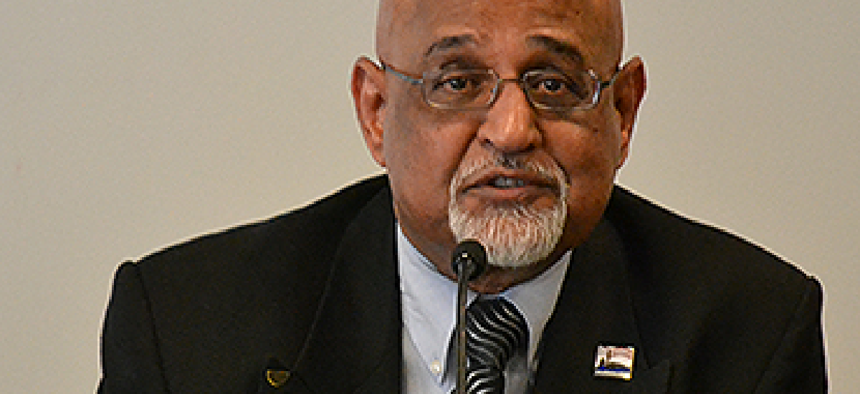Challenge and opportunity await in data center consolidation

Consolidation pays off, but it's wise to take the long view on savings, say those in the trenches.

Kirit Amin, deputy CIO and chief technology officer at the Commerce Department, says data center consolidation is 'a tall order for us.'
As agencies scramble to comply with cost-cutting IT initiatives, many are turning the challenges inherent in data center consolidation into opportunities and taking the long view on expected savings.
Federal IT experts from three agencies addressed some of those challenges at a FedInsider event titled "Federal Data Centers: 2013 and Beyond" on March 20. They said the issues boil down to doing more with less -- a common phrase these days.
"The [Office of Management and Budget] is on to something that has teeth in it," said Kirit Amin, deputy CIO and chief technology officer at the Commerce Department.
He was referring to OMB's recent decision to roll the Federal Data Center Consolidation Initiative (FDCCI), which calls for agencies to close 1,200 of about 2,900 data centers, into PortfolioStat, a program to conduct evidence-based reviews of agencies' IT portfolios.
"It's a tall order for us," Amin said. "And as a result, we are taking a serious look at all this and saying, 'OK, how are we collectively going to address this going forward? How is [Commerce] going to evolve into all these different areas?'"
He said the challenges present a tremendous opportunity to provide value for agencies and their customers. Accordingly, his agency is drafting short-, mid- and long-term strategic plans as far as five years out to manage metrics, goals and milestones for FDCCI, PortfolioStat, TechStat and the Digital Government Strategy. Edward Rhyne, a program manager in the Cyber Security Division of the Department of Homeland Security's Science and Technology Directorate, shared similar thoughts with an audience predominantly made up of systems integrators.
"We're turning challenges into opportunities," Rhyne said.
DHS, a leader in data center consolidation, has reduced 46 data centers down to five. In terms of cybersecurity, he said that although having fewer data centers gives would-be attackers a smaller zone to target, the threat is offset by a smaller perimeter that has more controlled resources within it.
The Defense Department is one of the few agencies that have provided estimates of what they expect to achieve. DOD officials have said they anticipate savings of about $2 billion. Rhyne said he could not comment on DHS' expected savings.
In general terms, Amin said savings from data center consolidation aren't immediately apparent. Typically, savings come from reductions in real estate, energy consumption and systems administrators. But there's a cost to consolidation, too, because moving data and applications to a centralized server isn't like moving furniture from an apartment to a house.
"Metrics right away is difficult to do," Amin said. "If I'm massively virtualizing, I have a cost to do that -- same thing with provisioning tiered storage."
James Flanagan, director of the Office of Information Services at the Nuclear Regulatory Commission, said that just because the information, applications and hardware from a data center are relocated elsewhere doesn't mean the facility stops costing money right away.
"Freeing up a data center doesn't mean it's back up on the market tomorrow," Flanagan said. "When an agency has released a data center, it does not necessarily translate into freed space. The issue lies in [asking], 'Does my footprint really shrink?'"



